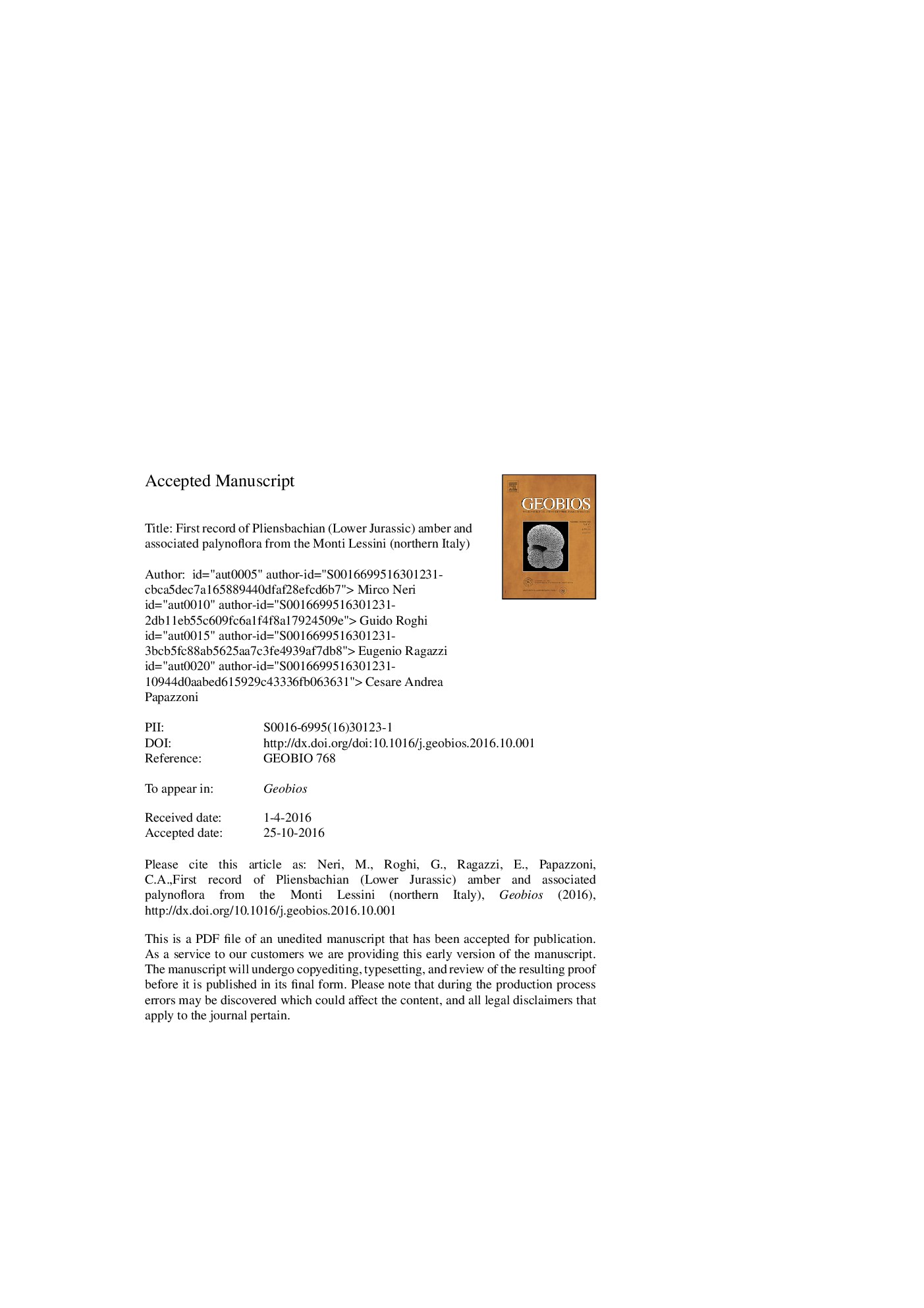| کد مقاله | کد نشریه | سال انتشار | مقاله انگلیسی | نسخه تمام متن |
|---|---|---|---|---|
| 5788145 | 1414221 | 2017 | 40 صفحه PDF | دانلود رایگان |
عنوان انگلیسی مقاله ISI
First record of Pliensbachian (Lower Jurassic) amber and associated palynoflora from the Monti Lessini (northern Italy)
ترجمه فارسی عنوان
سابقه اول پانینزبابیان (پایین ژوراسیک) و پالینوفلورا از مونته لسینی (شمال ایتالیا)
دانلود مقاله + سفارش ترجمه
دانلود مقاله ISI انگلیسی
رایگان برای ایرانیان
کلمات کلیدی
موضوعات مرتبط
مهندسی و علوم پایه
علوم زمین و سیارات
فسیل شناسی
چکیده انگلیسی
The fossil record of amber dates back to the Palaeozoic, but it is only since the Mesozoic that amber became relatively common, probably because of the spreading of resin-producing plants. In Italy, the oldest ambers come from the Middle and Upper Triassic of the Dolomites. Cretaceous ambers come from some Albian sites in the Dolomites and from the Coniacian-Santonian of Vernasso, Julian Prealps, northern Italy. Until now, no Jurassic sites with amber have been reported in Italy, and this “Jurassic gap” seems generalized, since there are only a few Jurassic ambers described all over the world. Here, we report the first finding of Lower Jurassic (Pliensbachian) amber from the Bellori locality (Grezzana, Verona Province, Northern Italy). The amber was found in two clayey-coal levels containing plant remains and cuticles, with subordinate bivalves, foraminifera and ostracods. Palynomorphs of the amber levels are dominated by levigate and ornamented spores (ferns) and Circumpolles (conifers). Foraminiferal linings and algal cysts are also present. The freshwater alga Pseudoschizaea is reported for the first time from the Lower Jurassic. The amber shows different kinds of preservation, some peculiar features probably connected with the plant structure, and colours ranging from light yellow to blackish red. Moreover, it includes millimetre-sized wood structures (“mummified wood”) and gas bubbles. Fourier-transform-Infrared, thermogravimetric and differential thermogravimetric analyses were carried out and resulted in a clear characterization of this amber with respect to all others known so far. These data, together with sedimentological observations and fossil content analysis, suggest a coastal palaeoenvironment under rather wet conditions, comparable with the present-day Everglades, with the addition of a monsoonal climate as in the modern southern Asia.
ناشر
Database: Elsevier - ScienceDirect (ساینس دایرکت)
Journal: Geobios - Volume 50, Issue 1, JanuaryâFebruary 2017, Pages 49-63
Journal: Geobios - Volume 50, Issue 1, JanuaryâFebruary 2017, Pages 49-63
نویسندگان
Mirco Neri, Guido Roghi, Eugenio Ragazzi, Cesare Andrea Papazzoni,
